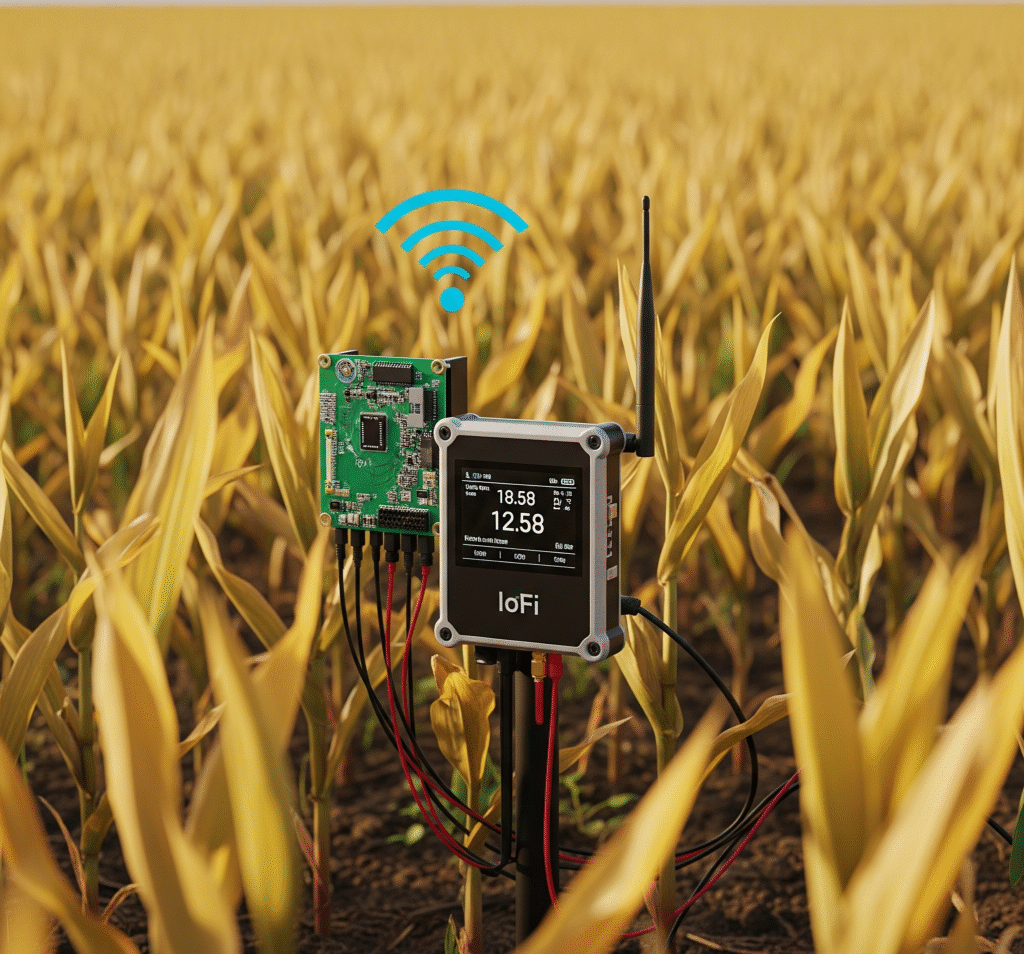The Internet of Things (IoT) is transforming our world, from smart homes and connected cars to industrial automation and smart cities. These interconnected devices bring unprecedented convenience and efficiency, but they also introduce a unique set of security challenges. A single vulnerable IoT device can become an entry point for cyberattacks, compromising entire networks, stealing sensitive data, or even causing physical damage.

One of the most crucial, yet often overlooked, aspects of IoT security is the ability to securely update devices. Just like your smartphone or computer, IoT devices require regular updates to patch vulnerabilities, fix bugs, and introduce new features. Without a robust and secure update mechanism, even the most well-designed IoT device can quickly become a significant security risk.
Why are IoT Updates So Important?
Patching Vulnerabilities: New security flaws are discovered constantly. Timely updates ensure that your IoT devices are protected against the latest threats. Leaving devices unpatched is like leaving your front door unlocked – an open invitation for attackers.
Bug Fixes and Performance Improvements: Updates aren’t just about security. They also address software bugs that can affect device performance, reliability, and user experience.
New Features and Functionality: Manufacturers often roll out new features or optimize existing ones through updates, enhancing the value and longevity of your IoT devices.
Compliance and Regulations: As IoT adoption grows, so does regulatory scrutiny. Secure update capabilities are often a requirement for meeting industry standards and legal compliance.
The Challenges of Securely Updating IoT Devices
While the need for updates is clear, implementing them securely in an IoT environment presents several challenges:
Resource Constraints: Many IoT devices are low-power, low-cost devices with limited processing power and memory. This makes implementing complex security protocols for updates difficult.
Scale and Diversity: Managing updates for thousands or even millions of diverse IoT devices, often deployed in remote or hard-to-reach locations, is a logistical nightmare.
Network Connectivity: IoT devices may rely on intermittent or unstable network connections, making reliable update delivery a challenge.
Lack of Standardization: The IoT landscape is fragmented, with various manufacturers using different hardware, software, and communication protocols, making a universal update solution difficult.
Manufacturer Support: Unfortunately, some manufacturers may not prioritize long-term security updates, leaving devices vulnerable over time.
Best Practices for Securely Updating IoT Devices
To mitigate these challenges and ensure the ongoing security of your IoT ecosystem, consider these best practices:
1. Over-the-Air (OTA) Update Mechanism:
Secure Channels: Updates should always be delivered over encrypted and authenticated channels (e.g., using TLS/SSL) to prevent eavesdropping and tampering.
Cryptographic Signing and Verification: Every update package must be digitally signed by the device manufacturer using a trusted private key. Devices should then verify this signature using a corresponding public key before installing the update. This ensures the update’s authenticity and integrity, preventing malicious or corrupted firmware from being installed.
Atomic Updates with Rollback Capability: Updates should be “atomic,” meaning they either fully succeed or fully fail and revert to the previous stable version. This prevents devices from being “bricked” by a failed update. Dual-partitioning, where a new firmware is installed on an inactive partition before swapping, is a common approach.
Delta Updates: To minimize bandwidth consumption, especially for resource-constrained devices, consider using delta updates, which only transmit the changes between firmware versions.
2. Robust Authentication and Authorization:
Strong Device Identities: Each IoT device should have a unique, cryptographically strong identity (e.g., using X.509 certificates). This identity is crucial for authenticating the device to the update server and ensuring only authorized devices receive updates.
Role-Based Access Control (RBAC): Implement granular access controls for who can initiate, approve, and deploy updates.
3. Secure Boot and Hardware Root of Trust:
Secure Boot: This mechanism ensures that only trusted, cryptographically signed code can run on the device at startup, preventing unauthorized modifications to the bootloader or firmware.
Hardware Root of Trust (HRoT): A HRoT provides an immutable foundation of trust within the device, storing cryptographic keys and ensuring the integrity of the boot process and subsequent software execution.
4. Continuous Monitoring and Logging:
Update Success/Failure Tracking: Monitor the status of update deployments to identify and address any issues promptly.
Anomaly Detection: Implement systems to detect unusual update patterns or attempted unauthorized updates, indicating a potential security breach.
5. Vendor Collaboration and Due Diligence:
Choose Secure-by-Design Devices: Prioritize IoT devices from manufacturers with a strong commitment to security, including a clear update roadmap and robust security features.
Understand Vendor Policies: Before purchasing, inquire about the manufacturer’s update frequency, support lifecycle for devices, and their approach to addressing newly discovered vulnerabilities.
The Bottom Line
IoT devices are here to stay, and their secure operation is paramount. Implementing and maintaining a secure update mechanism is not just a feature; it’s a fundamental pillar of IoT security. By prioritizing secure OTA updates, device manufacturers and users alike can ensure the long-term reliability, functionality, and safety of our increasingly connected world.